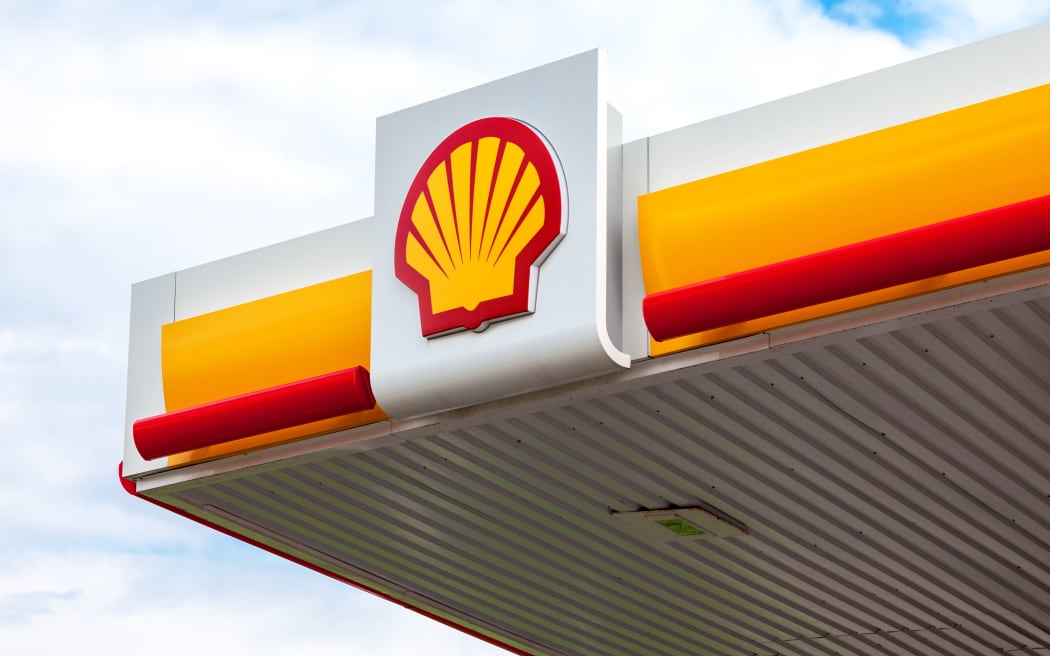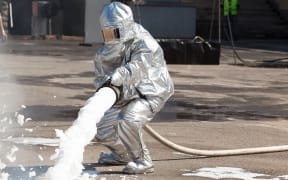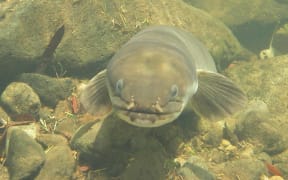The multinational company at one of the sites of firefighting chemical contamination in south Taranaki is refusing to release test results.

Photo: 123RF
Wood Group Training, an Aberdeen-based company in Scotland with 55,000 employees, operates the firefighting training site near Opunake.
Wood has told the Taranaki Regional Council the results are confidential.
A full and final report "was provided under a requirement of confidentiality", council chief executive Brian Chamberlain said in an Official Information Act response to RNZ.
"The council has been in discussion with the provider re-releasing the report in response to your [RNZ's] request.
"As of 8 August, the company [Wood Group] has advised that it is not prepared at this time to allow the council to do so."
It remains unclear which of the PFAS-class of chemicals is in the groundwater - PFOS or PFOA - and at what levels. The council has said only that it is at an "elevated" level.
PFOS and PFOA foams have both been banned in New Zealand since 2006.
Research notes risks from fish
A European Food Safety Authority panel recently included fish as an important contributor for calculating long-term exposure to both PFOA and PFOS.
Its research indicates "a considerable proportion of the population" in Europe is ingesting more PFASs in food than is safe.
The panel has set a tolerable weekly intake of PFOA that is only half the intake for PFOS. Yet in New Zealand it is PFOS that is getting nearly all the attention so far from authorities, even though PFOA in precursor form is still in many foams still in use in this country.
RNZ has asked Wood Group directly to release its water test results. It has not responded to that.
"Protecting the environments in which we work is our priority and we are working closely with the Taranaki Regional Council and regulatory authorities," it said in a statement.
Three other sites in Taranaki, all operated by oil company Shell, have PFOS in their groundwater or stormwater discharge at above safe levels for drinking water. The exact levels have not been made public either. RNZ has asked Shell for its test results.
The council said it had not asked Shell what the exact levels were.

Shell is a multinational oil and gas company Photo: 123RF
Shell is in the process of removing PFOS foam at its Paritūtū and Omata tank farms, 12 years after it was banned.
When asked by RNZ which government agency missed the fact that Shell held onto a banned hazardous substance for 12 years, the Environmental Protection Authority said it "became responsible for monitoring and compliance regarding persistent organic pollutants from 1 December 2017". Before that it was WorkSafe and its predecessor, the Labour Department.
Previously, water testing results have been made public. But that was because they had been paid for by taxpayers (specifically by the Defence Force), as part of nation-wide foam contamination investigations.
Now that regional councils are asking private companies to do testing, in future there may be more occasions when the results are kept confidential.
In Taranaki, Wood Group had a consent to discharge water into the Oaonui stream, where the eels recorded high PFOS levels in council-run tests made public this week.
The detection in eels was "the only finding of note in a wide-ranging regional investigation", the council said in an initial statement - though it went on to say groundwater had been contaminated at the Shell and Wood Group sites.
Government response to contamination
The Environment Ministry, which is leading the all-of-government response to foam contamination, only updated its website on Friday to include the Taranaki information.
Shell told RNZ that it let its "stakeholders" know about the contamination months ago.
The ministry website said environmental concerns were first raised globally about PFAS chemicals in the 1990s.
However, widespread recent reporting in the United States about a lawsuit against PFAS manufacturer 3M pushes that date back to the 1970s.
The New Zealand government is relying on health advice from Australia.
An expert health panel there recently updated its advice saying the health risks were inconclusive but could not be ruled out. The head of that panel subsequently told a public meeting he had "no background in doing PFAS research" and somehow he got "dragged" into it.
In Taranaki, Wood's discharge consent was cancelled in late 2016 after foam was spotted in the stream, and hasn't been renewed since.
"Follow-up inspections confirmed actions by the company to remove all fire-fighting foams from the facility," the council said.
The holding ponds Wood Group discharged into do not have impermeable liners to stop leaching.
The council told RNZ that discharges into Oaonui Stream were "very rare". However, there was a fire training exercise every fortnight, and elsewhere the council said that discharges occurred once or twice a month.
The council's monitoring programme into Wood Group and Shell at Opunake for 2016-17 said their performance "remains at a high level". It does not mention the foam in the stream.
Monitoring included six inspections, five water samples for physicochemical analysis and a biomonitoring water survey.
These "showed that the discharges were not causing any adverse effects on the Ngapirau Stream", it said.
"This was supported by the findings of the macroinvertebrate survey carried out in the stream."
Eels in the Ngapirau Stream also have high levels of PFOS in them.
A monitoring report for 2017-18 has not been written yet.
The most recent 2016-17 monitoring report for Shell's tank farms at both Paritūtū and Omata said the overall compliance and environmental performance was "high".
Gaps in monitoring and testing
None of the Taranaki routine monitoring has included tests designed to detect PFAS. There is only one lab in the country accredited to do this test.
It also remains unclear what exposure the Taranaki sites have had to PFOA.
The widespread testing ordered by the government this year for PFAS contamination also has its limitations: it is designed to detect around 30 types of PFASs, including PFOS and PFOA, but misses potentially hundreds of others.
Another test, called Top Assay, detects all the PFASs in a sample, and conglomerates them, but this test, which is newer and which some industry players question, is not being used in New Zealand.
Gaps remain too, in what government are telling the public about where the banned PFOS and PFOA foam has been found, and what's being done with it.
The Environmental Protection Authority said a comprehensive investigation that reported its findings at the end was "preferable to drip-feeding information, which can jeopardise the integrity of an ongoing investigation". It also respects the rights of parties who are the "subject of investigation".
However, the authority was quick to name four regional airports found with PFOS foam earlier this year, and to issue compliance orders requiring them to come up with disposal plans urgently.
A month later the authority issued its own disposal recommendations.
The Airports Association admitted airports were largely unaware of their legal obligations around the banned foams since 2006.
Shell has made no comment about why it broke the ban, except to allude to the fact it didn't even know it had PFOS foam until the multinational went looking in March, four months after the Defence Force first revealed contamination around its bases.
Shell, Wood Group and the Defence Force all employ environmental hazards managers of one kind or another.
An OECD report in 2002 said PFOS was a "persistent, bioaccumulative and toxic to mammalian species" and recommended further research to "predict risk to humans".
Records show the US EPA passed this warning to the Australian Defence Force. The New Zealand Defence Force told RNZ it has no record of receiving a heads-up.





